- Регистрация
- 17 Февраль 2018
- Сообщения
- 23 686
- Лучшие ответы
- 0
- Баллы
- 2 093
Offline
Most computers and storage drives still use the common SATA or PCIe 3.0 interfaces to sling your bits of data around, but if you’re lucky enough to own a relatively modern PC, you might be able to upgrade to a solid-state drive (SSD) built on the insanely fast PCIe 4.0 protocol.
We’ve tested several PCIe 4.0 SSDs and the best one to cross our labs thus far is the Solidgm P44 Pro in a field of tough contenders thanks to ferociously fast speeds only rivaled by next-gen PCIe 5.0 SSDs.
Read on to learn more, including what to look for in PCIe 4.0 SSD.
Updated 10/3/2023: To include the Solidigm P44 Pro as our new choice for best PCIe 4.0 SSD. Learn more about why we love this outstanding PCIe 4.0 drive in our summary below. Also, be sure to check out our latest review of the Lexar NM790. This PCIe 4.0 drive provides terrific price and performance, and only narrowly missed out on our top spot on this list.
Solidigm P44 Pro SSD – Best PCIe 4.0 SSD
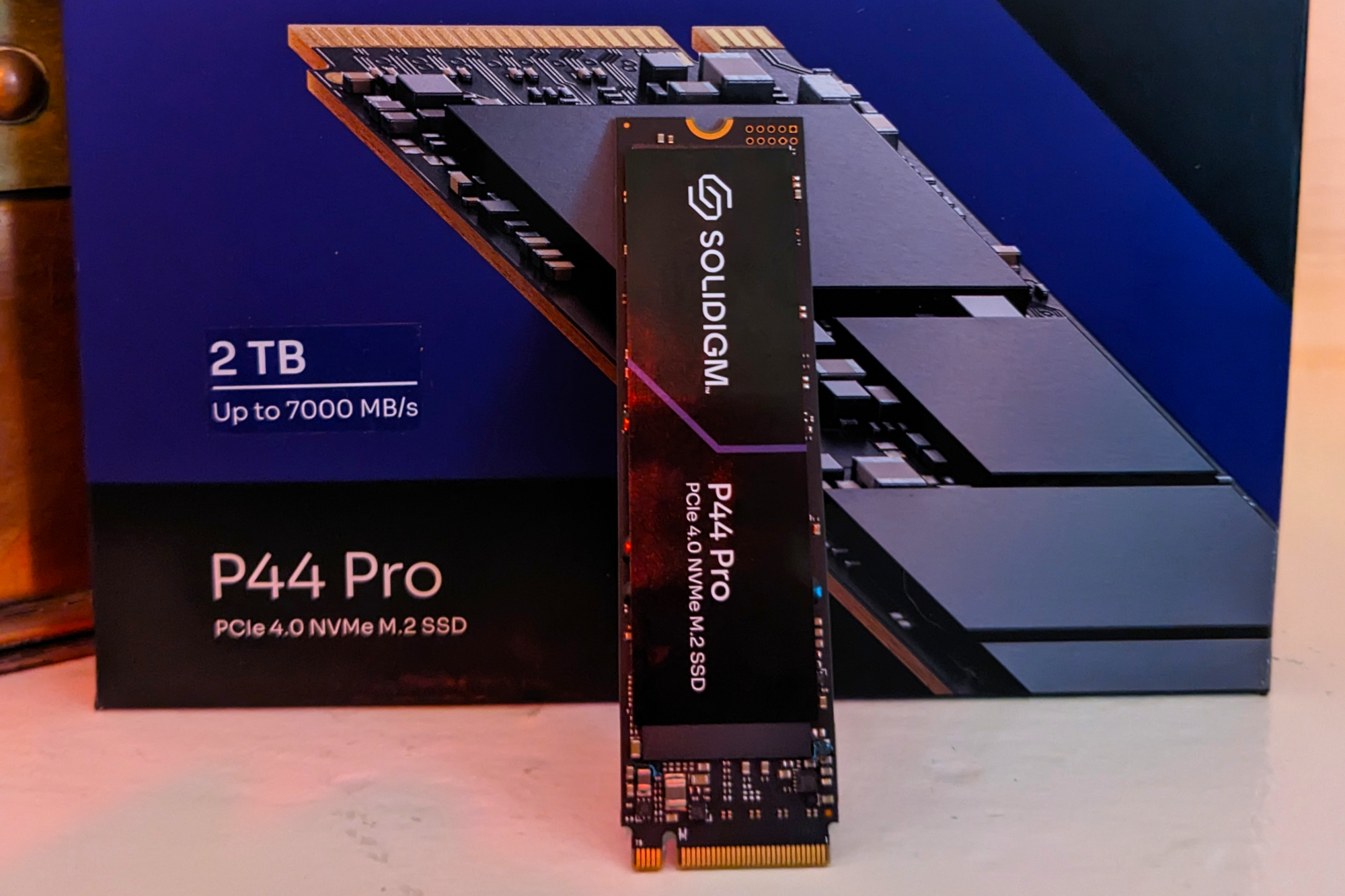
Pros
Cons
The Solidigm P44 Pro is without a doubt the fastest PCIe 4.0 drive we have ever tested. In fact, it finished within the top five fastest drives in our tests, and was only beaten by three next-gen PCIe 5.0 drives. Plus, by installing the Solidigm Windows driver you can further improve random performance in small read/writes making it even faster during everyday use.
Not only is the Solidigm P44 Pro performance top-notch, but it also has a very reasonable price so long as you shop at the right place—we found that pricing varies widely online from retailer to retailer. This is not only the best PCIe 4.0 drive on the market, but also one of the best SSDs period. And despite stiff competition from a crowded field of other excellent PCIe 4.0 drives it holds its own at the top.
Read our full Solidigm P44 Pro NVMe SSD review
WD Black SN850X – Best PCIe 4.0 SSD runner-up
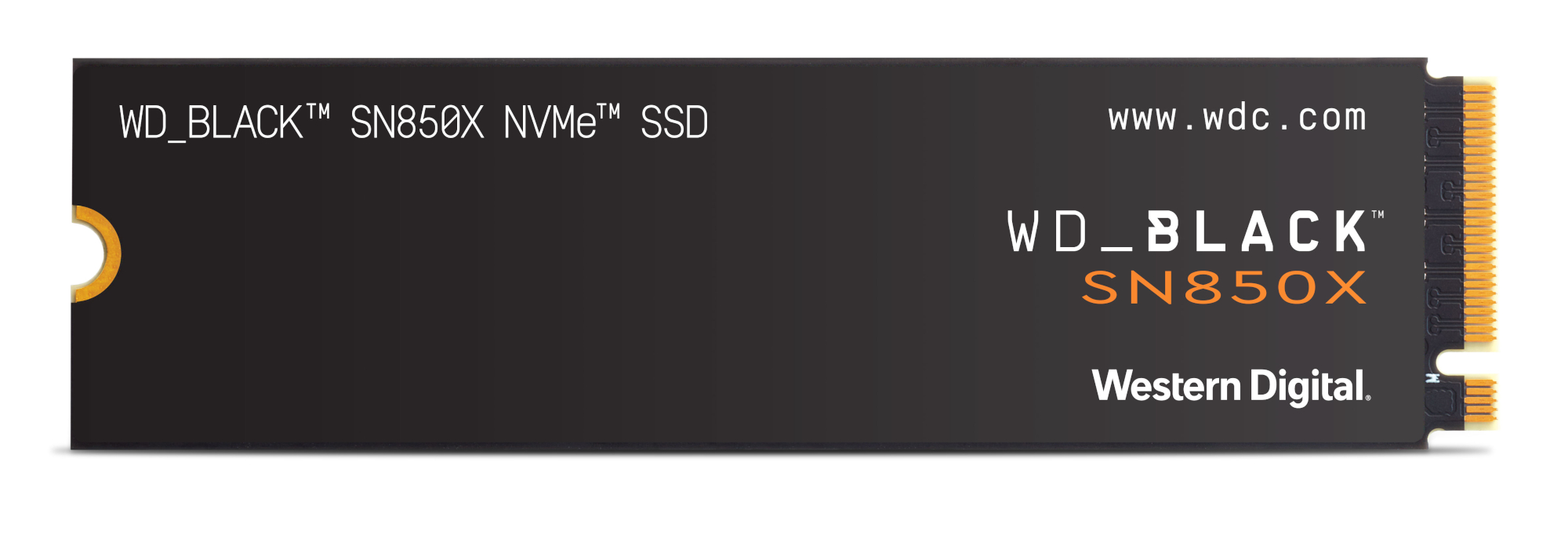
Pros
Cons
The WD Black SN850X is a screaming-fast drive and ranks right up next to the FireCuda 530 near the top in terms of speed. The reason the WD Black SN850X edges out that drive as our pick for best PCIe 4.0 runner-up is that it offers better value for the money—not only does it give you the same great speed as the FireCuda, but it does so at a lower price per GB.
Also, in terms of overall performance, the SN850X stands out with its excellent real-world transfer rates and outstanding random write performance. In the crowded field of great PCIe 4.0 SSDs, the WD Black SN850X holds its own despite stiff competition.
Read our full WD Black SN850X review
WD Blue SN580 SSD – Best budget PCIe 4.0 SSD
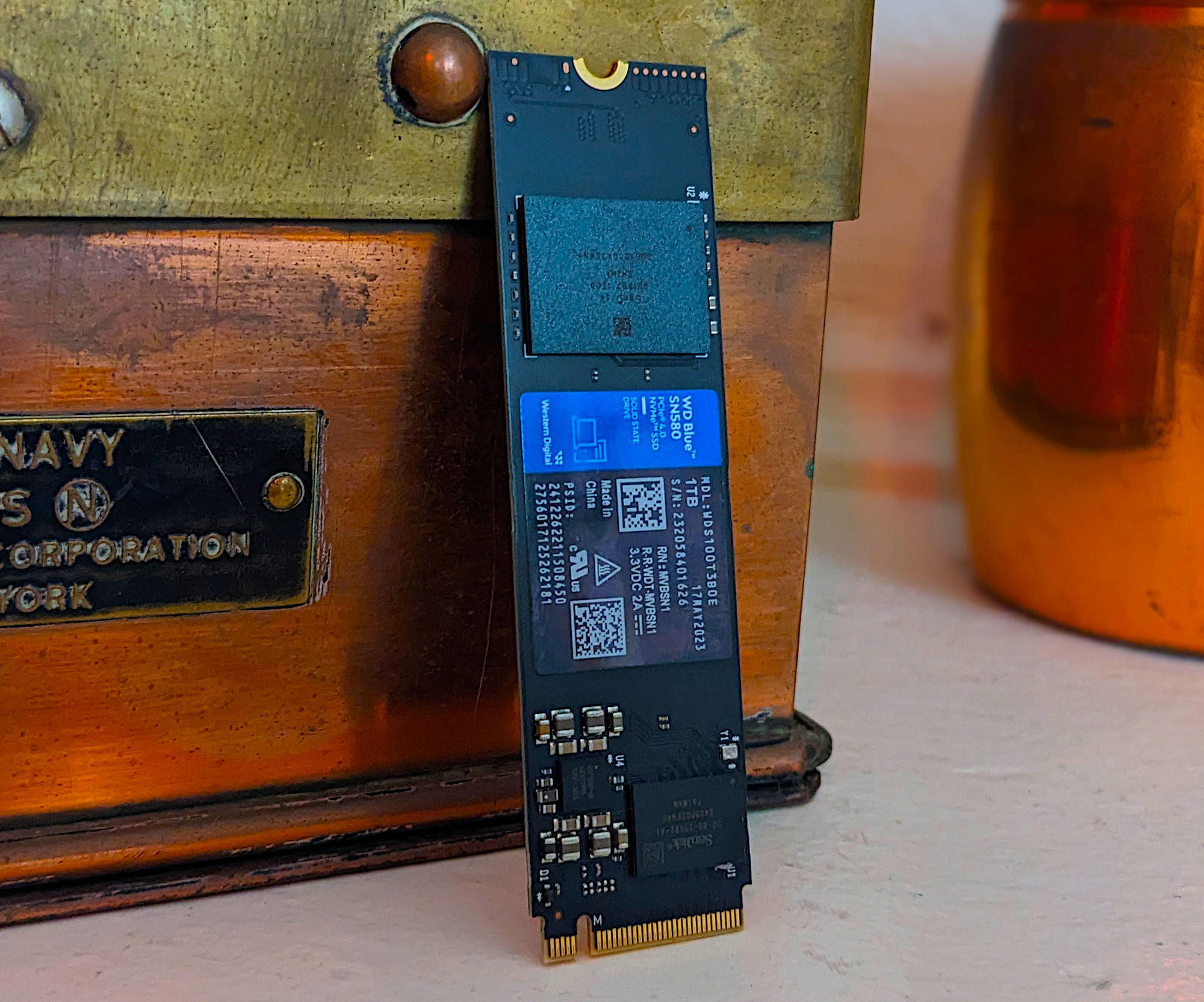
Pros
Cons
Best Prices Today: $49.99 at Walmart$49.99 at WesternDigital com
Now with the very first signs of PCIe 5.0 drives coming to market, we’re finally starting to see companies offering budget PCIe 4.0 NVMe drives at compelling prices. The best of the affordable bunch? The WD Blue SN580 NVMe SSD. At just $50 for a 1TB model at the time of writing you can get your hands on the excellent SN580—you won’t likely find any PCIe 4.0 drives with storage that cheap. And even with the low price you won’t be sacrificing any performance here either. In our testing, the SN580 turned out both stellar benchmark and real-world results. Admittedly, it slowed down considerably in the large 450GB transfer test, but seeing as how it’s unlikely anyone will write that much contiguous data it likely doesn’t matter. When all is said and done, the SN580 is a super-affordable wonderfully high-performing PCIe 4.0 SSD. It simply can’t be beat at this price point.
Read our full WD Blue SN580 review
Adata Legend 850 – Best budget PCIe 4.0 SSD runner-up
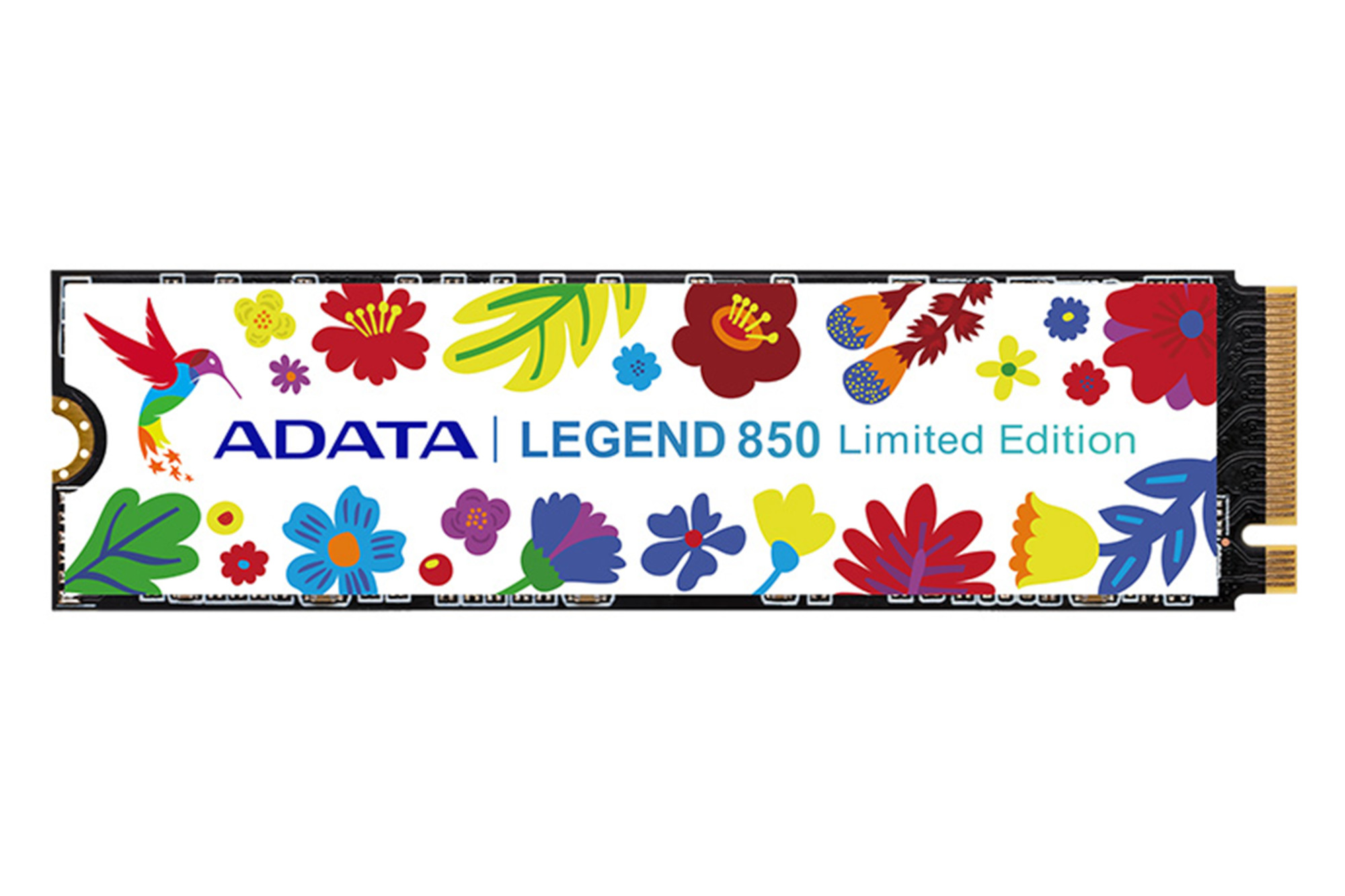
Pros
Cons
If you don’t need a 1TB capacity drive like the Crucial P3 Plus above, or you’re just looking to get your hands on a blazing-fast PCIe 4.0 for as little money as possible then the 512GB Adata Legend 850 is worth considering. For only $50 at the time of this writing, you can get the solid Legend 850. The drive scored very well in synthetic benchmark numbers for read scores, and in our real-world 48GB reading and writing test, it scored better than a lot of its peers. The 512GB capacity probably isn’t enough to be the main drive in a high-end gaming or content creation PC, but for the average budget gaming PC or laptop it would be a solid foundation or great upgrade.
Read our full Adata Legend 850 512GB SSD review
Sabrent Rocket Q4 NVMe SSD – Best for Steam Deck
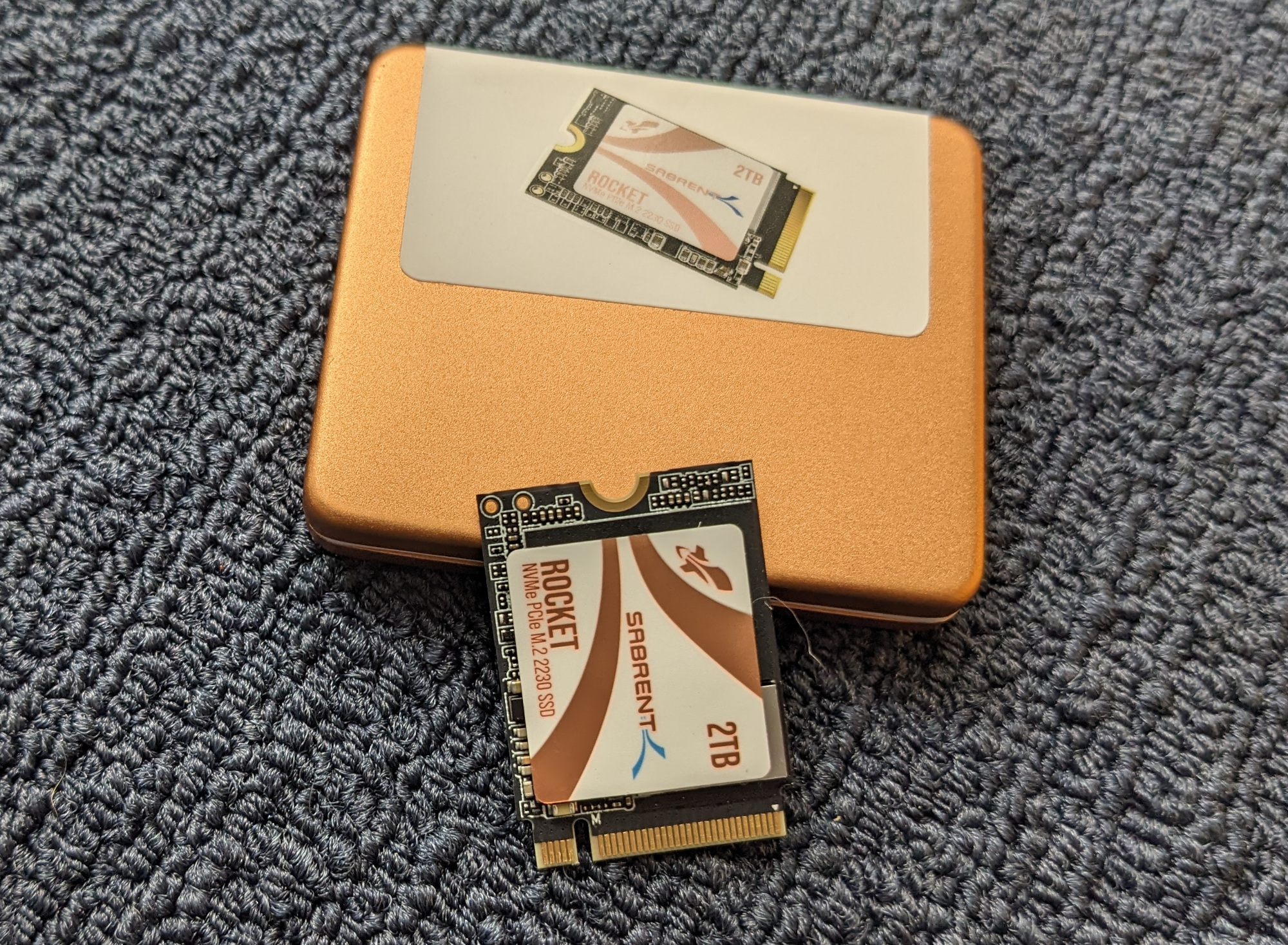
Pros
Cons
In the past, you were out of luck if you wanted to upgrade your storage in a smaller-sized device such as a handheld gaming console where the longer 2280 NVMe SSDs wouldn’t fit. Luckily, Sabrent has set out to change all of that with its line of Rocket half-sized 2230 small form-factor SSDs, and its latest Rocket Q4 is our favorite. It comes with up to 2TB of capacity and shockingly excellent real-world performance. Its unique feature is that it’s only 30mm long, meaning you’re able to use it in small devices such as a Steam Deck.
The Rocket drive has great everyday performance and truly impressive real-world transfer speed. During our testing, it cruised through the 48GB and 450GB transfer tests, beating out other zippy full-sized PCIe 4.0 drives. While the Rocket Q4 provides decent enough capacity-to-cost, if your device is able to handle the longer, standard-sized 2280 drives, you’ll likely have more options to choose from and might be able to find even better price-for-performance. Regardless, we love this compact SSD and the Sabrent Rocket expertly fits a niche that is only likely to grow more common with devices such as the Steam Deck in the future.
Read our full Sabrent Rocket Q4 NVMe SSD review
Crucial T700 – Best PCIe 5.0

Pros
Cons
Sure, PCIe 4.0 is great and all, but what if you want to upgrade to PCIe 5.0? If your system features a PCIe 5.0 M.2 slot, and you can afford it, then there is no question you’ll get significantly faster read and write speeds. And if you do decide to upgrade, there is currently no better PCIe 5.0 SSD than the Crucial T700. It practically shattered all of our benchmarks for both synthetic and real-world tests. How fast is it? Well, in a side-by-side comparison with the WD Black SN850X, our top pick for best PCIe 4.0, the Crucial T700 almost doubled it in sequential read and write benchmarks, was around 30 percent fast in the 48GB transfer test, and about 25 percent faster in the 450GB transfer tests. Currently, the T700 is undoubtedly the king of the hill by a fair margin when it comes to PCIe 5.0. So if and when you decide to make the change, the Crucial T700 is your best bet.
Read our full Crucial T700 PCIe 5.0 NVMe SSD review
What to look for in an SSD
There are a few things to look out for, but most importantly you’ll want to focus on capacity, price, and warranty length. Three-year warranties are standard, but some nicer models are guaranteed for up to five years. And unlike the olden days of SSDs, modern drives won’t wear out with normal consumer usage, as Tech Report tested and proved years ago with a grueling endurance test.
Another crucial thing to watch out for is the technology used to connect the SSD to your PC. For more details and buying advice you can read our in-depth guide on which type of SSD you should buy.
Speed matters, of course, but as we said most modern SSDs saturate the SATA III interface. Not all of them, though.
How we test SSDs
We test SSDs using a variety of synthetic benchmarks (such as CrystalDiskMark 6’s various tests) and real-world tests, including 48GB transfers that showcase how a drive performs during common tasks, and also a demanding 450GB transfer test that pushes an SSD’s cache performance to the limit.
The PCIe 4.0 testing was done on an MSI MEG X570 motherboard socketing an AMD Ryzen 7 3700X 8-core CPU, using the same Kingston DRAM, cards, and software. All testing is performed on an empty, or nearly empty drive. Note: performance will decrease as the drive fills up.
Storage
We’ve tested several PCIe 4.0 SSDs and the best one to cross our labs thus far is the Solidgm P44 Pro in a field of tough contenders thanks to ferociously fast speeds only rivaled by next-gen PCIe 5.0 SSDs.
Read on to learn more, including what to look for in PCIe 4.0 SSD.
Updated 10/3/2023: To include the Solidigm P44 Pro as our new choice for best PCIe 4.0 SSD. Learn more about why we love this outstanding PCIe 4.0 drive in our summary below. Also, be sure to check out our latest review of the Lexar NM790. This PCIe 4.0 drive provides terrific price and performance, and only narrowly missed out on our top spot on this list.
Solidigm P44 Pro SSD – Best PCIe 4.0 SSD

Pros
- Fastest PCIe 4.0 SSD to date
- DRAM facilitates excellent random performance
- Synergy low-level Windows driver improves random performance further
Cons
- Inconsistent pricing on web
The Solidigm P44 Pro is without a doubt the fastest PCIe 4.0 drive we have ever tested. In fact, it finished within the top five fastest drives in our tests, and was only beaten by three next-gen PCIe 5.0 drives. Plus, by installing the Solidigm Windows driver you can further improve random performance in small read/writes making it even faster during everyday use.
Not only is the Solidigm P44 Pro performance top-notch, but it also has a very reasonable price so long as you shop at the right place—we found that pricing varies widely online from retailer to retailer. This is not only the best PCIe 4.0 drive on the market, but also one of the best SSDs period. And despite stiff competition from a crowded field of other excellent PCIe 4.0 drives it holds its own at the top.
Read our full Solidigm P44 Pro NVMe SSD review
WD Black SN850X – Best PCIe 4.0 SSD runner-up

Pros
- Excellent performance
- Decently affordable given its speed
- Available up to 4TB
- Optional heatsink for 1/2TB models
Cons
- Pricey per gigabyte
- Somewhat parsimonious TBW ratings
The WD Black SN850X is a screaming-fast drive and ranks right up next to the FireCuda 530 near the top in terms of speed. The reason the WD Black SN850X edges out that drive as our pick for best PCIe 4.0 runner-up is that it offers better value for the money—not only does it give you the same great speed as the FireCuda, but it does so at a lower price per GB.
Also, in terms of overall performance, the SN850X stands out with its excellent real-world transfer rates and outstanding random write performance. In the crowded field of great PCIe 4.0 SSDs, the WD Black SN850X holds its own despite stiff competition.
Read our full WD Black SN850X review
WD Blue SN580 SSD – Best budget PCIe 4.0 SSD

Pros
- Fantastically affordable
- Super fast real world transfers
- Single-sided for laptop upgrades
Cons
- Slows to less than 300MBps when writing off secondary cache
- Slightly low endurance rating
Best Prices Today: $49.99 at Walmart$49.99 at WesternDigital com
Now with the very first signs of PCIe 5.0 drives coming to market, we’re finally starting to see companies offering budget PCIe 4.0 NVMe drives at compelling prices. The best of the affordable bunch? The WD Blue SN580 NVMe SSD. At just $50 for a 1TB model at the time of writing you can get your hands on the excellent SN580—you won’t likely find any PCIe 4.0 drives with storage that cheap. And even with the low price you won’t be sacrificing any performance here either. In our testing, the SN580 turned out both stellar benchmark and real-world results. Admittedly, it slowed down considerably in the large 450GB transfer test, but seeing as how it’s unlikely anyone will write that much contiguous data it likely doesn’t matter. When all is said and done, the SN580 is a super-affordable wonderfully high-performing PCIe 4.0 SSD. It simply can’t be beat at this price point.
Read our full WD Blue SN580 review
Adata Legend 850 – Best budget PCIe 4.0 SSD runner-up

Pros
- Great real-world performance
- Very affordable
- Attractive designer-styled heat spreader available.
Cons
- 512GB capacity is a relatively slow writer
If you don’t need a 1TB capacity drive like the Crucial P3 Plus above, or you’re just looking to get your hands on a blazing-fast PCIe 4.0 for as little money as possible then the 512GB Adata Legend 850 is worth considering. For only $50 at the time of this writing, you can get the solid Legend 850. The drive scored very well in synthetic benchmark numbers for read scores, and in our real-world 48GB reading and writing test, it scored better than a lot of its peers. The 512GB capacity probably isn’t enough to be the main drive in a high-end gaming or content creation PC, but for the average budget gaming PC or laptop it would be a solid foundation or great upgrade.
Read our full Adata Legend 850 512GB SSD review
Sabrent Rocket Q4 NVMe SSD – Best for Steam Deck

Pros
- Half-sized 2230 (22mm wide, 30mm long) form factor fits a variety of devices
- Amazingly fast at real-world tasks
- Decently affordable
- Unmitigated five-year warranty
Cons
- Writes slow to a crawl when secondary cache is depleted
In the past, you were out of luck if you wanted to upgrade your storage in a smaller-sized device such as a handheld gaming console where the longer 2280 NVMe SSDs wouldn’t fit. Luckily, Sabrent has set out to change all of that with its line of Rocket half-sized 2230 small form-factor SSDs, and its latest Rocket Q4 is our favorite. It comes with up to 2TB of capacity and shockingly excellent real-world performance. Its unique feature is that it’s only 30mm long, meaning you’re able to use it in small devices such as a Steam Deck.
The Rocket drive has great everyday performance and truly impressive real-world transfer speed. During our testing, it cruised through the 48GB and 450GB transfer tests, beating out other zippy full-sized PCIe 4.0 drives. While the Rocket Q4 provides decent enough capacity-to-cost, if your device is able to handle the longer, standard-sized 2280 drives, you’ll likely have more options to choose from and might be able to find even better price-for-performance. Regardless, we love this compact SSD and the Sabrent Rocket expertly fits a niche that is only likely to grow more common with devices such as the Steam Deck in the future.
Read our full Sabrent Rocket Q4 NVMe SSD review
Crucial T700 – Best PCIe 5.0

Pros
- Breathtaking performance
- Available with or without heatsink
- Up to 4TB in capacity
Cons
- Extremely pricey
- Requires the still rare PCIe 5.0 M.2 slot
Sure, PCIe 4.0 is great and all, but what if you want to upgrade to PCIe 5.0? If your system features a PCIe 5.0 M.2 slot, and you can afford it, then there is no question you’ll get significantly faster read and write speeds. And if you do decide to upgrade, there is currently no better PCIe 5.0 SSD than the Crucial T700. It practically shattered all of our benchmarks for both synthetic and real-world tests. How fast is it? Well, in a side-by-side comparison with the WD Black SN850X, our top pick for best PCIe 4.0, the Crucial T700 almost doubled it in sequential read and write benchmarks, was around 30 percent fast in the 48GB transfer test, and about 25 percent faster in the 450GB transfer tests. Currently, the T700 is undoubtedly the king of the hill by a fair margin when it comes to PCIe 5.0. So if and when you decide to make the change, the Crucial T700 is your best bet.
Read our full Crucial T700 PCIe 5.0 NVMe SSD review
What to look for in an SSD
There are a few things to look out for, but most importantly you’ll want to focus on capacity, price, and warranty length. Three-year warranties are standard, but some nicer models are guaranteed for up to five years. And unlike the olden days of SSDs, modern drives won’t wear out with normal consumer usage, as Tech Report tested and proved years ago with a grueling endurance test.
Another crucial thing to watch out for is the technology used to connect the SSD to your PC. For more details and buying advice you can read our in-depth guide on which type of SSD you should buy.
- SATA: This refers to both the connection type and the transfer protocol, which is used to connect most 2.5-inch and 3.5-inch hard drives and SSDs to your PC. SATA III speeds can hit roughly 600MBps, and most—but not all—modern drives max it out. (More on that in the next section.)
- PCIe: This interface taps into four of your computer’s PCIe lanes to blow away SATA speeds, to the tune of nearly 4GBps over PCIe gen 3. Those sort of face-melting speeds pair nicely with supercharged NVMe drives. Both the PCIe lanes in your motherboard and the M.2 slot in your motherboard can be wired to support the PCIe interface, and you can buy adapters that allow you to slot “gumstick” M.2 drives into a PCIe lane. PCIe 4.0 drives are significantly faster, but require an AMD Ryzen 3000-series or Intel Core 11th-gen (or newer) processor, along with a compatible PCIe 4.0 motherboard.
- NVMe: Non-Volatile Memory Express technology takes advantage of PCIe’s bountiful bandwidth to create blisteringly fast SSDs that blow SATA-based drives out of the water. Check out PCWorld’s “Everything you need to know about NVMe” for a nitty-gritty deep-dive.
- M.2: This is where things get tricky. Many people assume M.2 drives all use NVMe technology and PCIe speeds, but that’s not true. M.2 is just a form factor. Sure, most M.2 SSDs use NVMe, but some still stick to SATA. Do your homework. Many modern Ultrabooks rely on M.2 for storage.
- U.2 and mSATA: You may also stumble across mSATA and U.2 SSDs, but both motherboard support and product availability are rare for those formats. Some older Ultrabooks included mSATA before M.2 became popular, and drives are still available if you need them.
Speed matters, of course, but as we said most modern SSDs saturate the SATA III interface. Not all of them, though.
How we test SSDs
We test SSDs using a variety of synthetic benchmarks (such as CrystalDiskMark 6’s various tests) and real-world tests, including 48GB transfers that showcase how a drive performs during common tasks, and also a demanding 450GB transfer test that pushes an SSD’s cache performance to the limit.
The PCIe 4.0 testing was done on an MSI MEG X570 motherboard socketing an AMD Ryzen 7 3700X 8-core CPU, using the same Kingston DRAM, cards, and software. All testing is performed on an empty, or nearly empty drive. Note: performance will decrease as the drive fills up.
Storage
